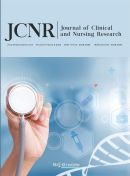Abstract
Postpartum hemorrhage is a serious complication of preeclampsia. The main influencing factors of Preeclampsia on postpartum hemorrhage include vascular disease, trophoblast differentiation and infiltration disorder, the influence of antispasmodic, sedative and antihypertensive drugs, the incidence of hypertensive disorder complicating pregnancy related to calcium deficiency, coagulation dysfunction, and decreased blood volume during pregnancy. In recent years, postpartum hemorrhage has been the leading cause of maternal death in the world. Therefore, it is critical to understand the influencing factors of preeclampsia on postpartum hemorrhage. Based on the research and guidelines of preeclampsia and postpartum hemorrhage in recent years, this paper analyzes the influencing factors of preeclampsia on postpartum hemorrhage, and provides new ideas for clinical reduction of postpartum hemorrhage.
References
Li L, Gu Y, Chen J, 2016, Pregnancy-Induced Hypertension and Postpartum Hemorrhage. China Family Planning and Obstetrics and Gynecology, 8(04): 10–12.
Li H, Han L, Yang Z, et al., Differential Proteomic Analysis of Syncytiotrophoblast Extracellular Vesicles from Early-Onset Severe Preeclampsia, Using 8-Plex iTRAQ Labeling Coupled with 2D Nano LC-MS/MS. Cellular Physiology and Biochemistry, 36(3): 1116–1130.
Liu J, 2019, Study on the Influence of Postpartum Hemorrhage in Patients with Pregnancy-Induced Hypertension and Its Predictive Index. International Journal of Laboratory Medicine, 40(15): 1836–1839.
Zhang T, Meng J, 2021, The Role of Exosomes in Vascular Endothelial Injury in Preeclampsia. Progress in Obstetrics and Gynecology, 30(04): 311–313.
Kim K-R, Jun S-Y, Kim J-Y, et al., 2004, Implantation Site Intermediate Trophoblasts in Placenta Cretas. Modem Pathol, 17(4): 1483–1490.
Zheng D, 2020, Study on the Mechanism of Long-Chain Non-Coding RNA GAS5 Involved in the Pathogenesis of Preeclampsia and Regulating the Behavior of Trophoblasts, dissertation, China Medical University.
Wang H, Guo Y, Wang M, 2020, Research Progress of Shallow Placenta Implantation in Hypertensive Disorder Complicating Pregnancy. International Journal of Obstetrics and Gynecology, 47(02): 165–168.
Gong H, 2018, Effect of Magnesium Sulfate Combined with Labetalol on Blood Pressure Control and Maternal and Infant Outcomes in Patients with Early Onset Severe Preeclampsia. Strait Pharmaceutical Journal, 30(05): 162–163.
Yang Q, 2013, Comparative Analysis of Curative Effect of Magnesium Sulfate and Magnesium Sulfate Combined with Nifedipine in Treating 100 Cases of Pregnancy-Induced Hypertension. Chinese and Foreign Medicine, 32(01): 13–14.
Zhou P, 2016, Clinical Analysis of Treatment of Pregnancy-Induced Hypertension with Magnesium Sulfate and Magnesium Sulfate Combined with Nifedipine. Chinese and Foreign Medical, 35(10): 126-127 + 132.
Li Y, 2018, Clinical Observation of Calcium Supplementation During Pregnancy to Prevent Pregnancy-Induced Hypertension. Electronic Journal of Clinical Medicine Literature, 5(55): 111. https://www.doi.org/10.16281/j.cnki.jocml.2018.55.096
Zhou N, Zhou B, Gao M, 2020, Evaluation of Therapeutic Effect of Low-Dose Aspirin Combined with Calcium and Vitamin E on Hypertensive Disorder Complicating Pregnancy. Chinese Journal of Family Planning, 28(03): 349–352.
Li Y, Li H, Jay S, 2017, Study on the Influence of Changes of Blood Coagulation System on Pregnancy Outcome and its Relationship with Preterm Delivery in Pregnant Women with Hypertension. Journal of Clinical and Experimental Medicine, 16(22): 2238–2240.
Jiang M, Lin J, 2016, Physiological Changes of Blood System During Pregnancy. Journal of Practical Obstetrics and Gynecology, 32(09): 641–643.
Liu S, 2005, Drug Selection for Prevention and Treatment of Postpartum Hemorrhage in Patients with Pregnancy-Induced Hypertension. Heilongjiang Medicine, 2005(05): 367–368.
